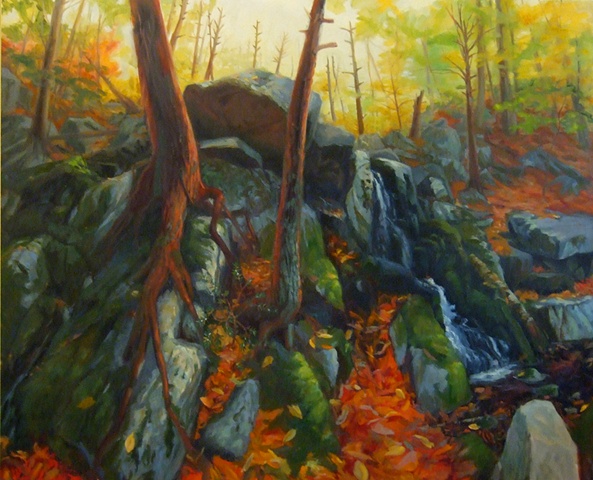invasive species
Adelges tsugae
The Hemlock Wooly Adelgid is the only animal species in this group of paintings, but it has had an astounding effect on plants, killing vast numbers of hemlock trees up and down the East coast. The Hemlock Wooly Adelgid is a small, fuzzy white insect that clings to the stems of hemlock twigs and feeds on the sap, restricting nutrients to the foliage and causing the needles to die. Without needles the tree starves to death, usually within three to five years of the initial attack.
They were first reported in the eastern United States in 1951 near Richmond, VA. The pathway and source of the introduction are unknown. It has since spread rapidly west into the Blue Ridge and north as far as Maine. About one-half of the area where hemlocks grow in the East is now infected with the wooly adelgid and in the absence of natural predators, it is expected to eventually spread to the entire range of the eastern hemlock.
Hemlock mortality rates in the Southern Applachians are particularly high. In the south, hemlocks form stands in cool mountain coves and along streams, as seen here. In Virginia’s Shenandoah Valley region, it is estimated that 90 percent of the hemlocks are now dead. Foresters fear that the impact may be similar to that of the chestnut blight, which exterminated nearly the entire population of the once common American Chestnut tree from eastern forests.
